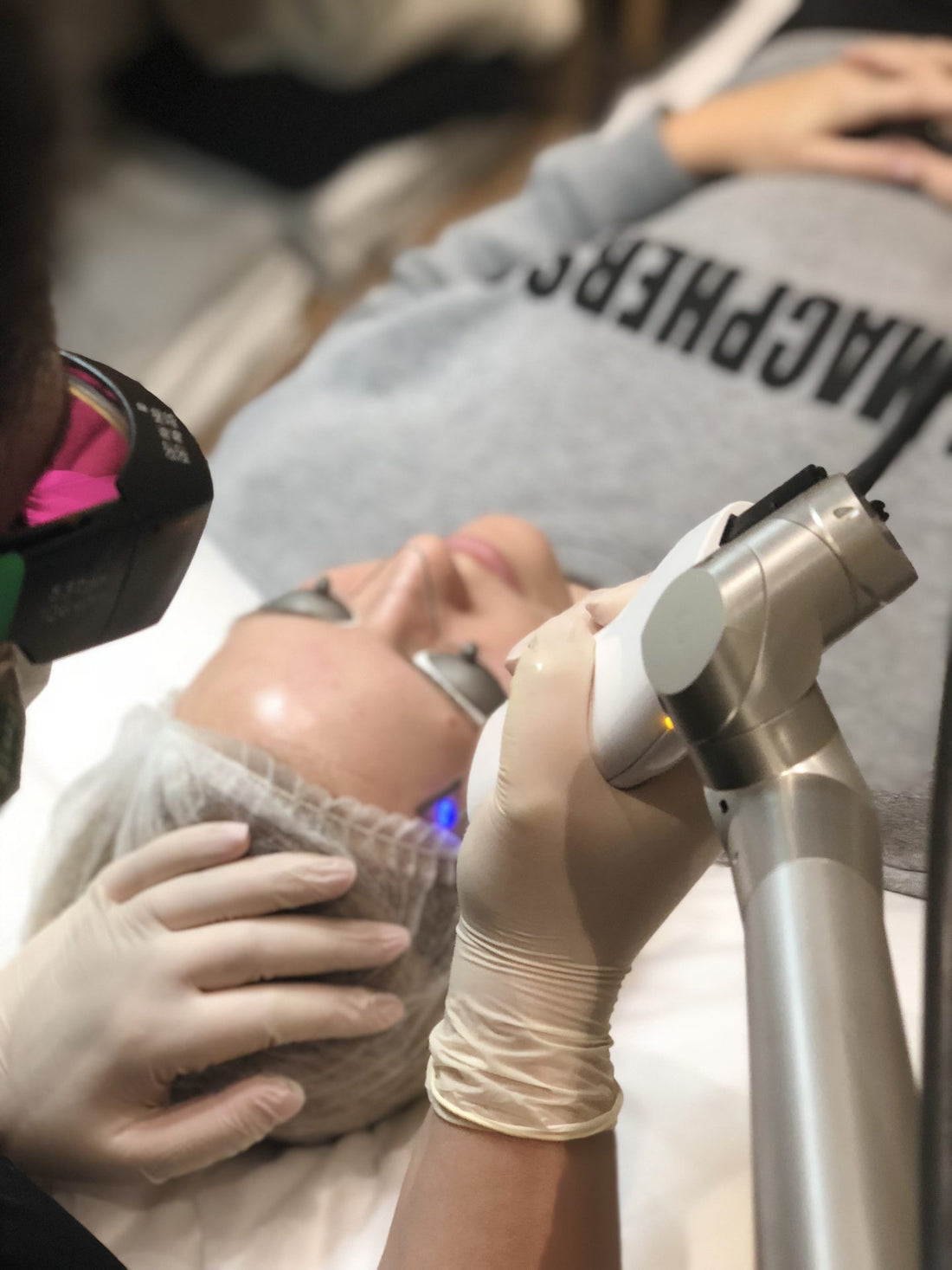Pigment Pulverizing Lasers
What They Treat: Individual brown spots and tattoo ink of all colors
How They Work: Pigment-seeking lasers fall into two main camps: Q-switched (à la the Ruby, Alexandrite, and Nd: YAG) and picosecond (PicoSure, Pico Genesis, PicoWay). Q-switched lasers are best known for squelching discrete sunspots, sometimes in a single shot. They release energy in short nanosecond bursts (that's one-billionth of a second), and without cooling the skin's surface, so pigment clusters up high and down low can take in heat.
With a span of wavelengths, they offer safe options for every skin tone: The forgiving Nd:YAG suits deeper (more heat-sensitive) complexions, including Hispanic, Indian, Asian, and African American; the more aggressive Ruby caters to Irish through Mediterranean types. With a more dizzying pulse duration, picosecond lasers fire 1,000 times faster than nano — so fast that the skin doesn't even register their heat, says Anne Chapas, a clinical instructor of dermatology at the Mount Sinai Medical Center.
They generate a strong acoustic wave that shatters pigment particles (safely, in all skin types). While they can help with sunspots, they shine as tattoo erasers: "They've made the removal process more effective than it was even one year ago," Anolik says. "Ink colors, like blue, green, and purple, which were extremely difficult to get with traditional Q-switched lasers, respond just beautifully to the picosecond pulse." Patients can expect to clear 90 percent of a tattoo over the course of several monthly sessions (six to 12 on average).
What They Feel Like: The Q-switched sensation is akin to a rubber-band snap. Discomfort during tattoo removal with a picosecond laser is more palpable. "I strongly recommend having a dermatologist apply numbing cream and inject lidocaine [an anesthetic] before treatment," Anolik says. "Otherwise, it can be extremely painful."
Downtime: Brown spots zapped with a Q-switched laser immediately turn pinkish-white, then darken to a flat, red-purple scab that lingers for a week before flaking off to reveal unsullied skin below. Tattoos will also white up post-pico before forming a broad scab that needs to be kept covered for about a week. "As pigment fades over time, the treatments create less intense wounds," Anolik says.
Risks: "The more baseline pigment a patient has — whether natural or from a suntan — the greater the chance of developing hypopigmentation [skin lightening] or hyperpigmentation [darkening]," says Waldorf. What’s more, she adds, those with medium skin tones, like some Hispanics and Asians, have a higher risk of post-inflammatory hyperpigmentation — dark marks born of inflammation — and recurrent pigment, meaning spots that clear but then return weeks later.
Price: $300 to $1000 per session depending on the area being treated
Results:

Courtesy of Alainn Clinic Q

Courtesy of Clinic Laase
(Featured image courtesy of Anne Fedorowytsch)
Author: Jolene Edgar

